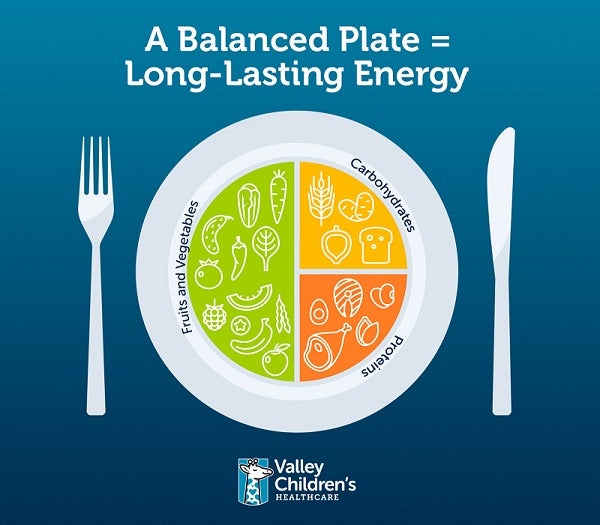Healthy Eating 101: An Introduction to a Healthy Plate
March 1, 2022The things we eat and drink have a profound impact on our health. A healthy eating pattern can reduce the risk or even prevent children from developing diet-related chronic diseases such as type 2 diabetes, obesity, heart disease, liver disease, and more. Awareness of these illnesses is especially in focus during the COVID-19 pandemic, as people with these conditions are at a higher risk of developing complications from a COVID-19 infection.
So how can a healthy eating pattern help? And to start with, what do we mean when we say “healthy eating pattern”? An eating pattern, or dietary pattern, is the combination of foods and beverages that make up a person’s intake over time. A person’s eating pattern can be made up of healthful foods, or no-so-healthful foods.
A healthy eating pattern centers on choosing nutrient-dense foods and beverages. Introducing children early to a healthy eating pattern has a positive impact on their food and beverage choices throughout their life.
One of the keys to having a healthy eating pattern is to change it up! Create meals from each of the major food groups: fruits and vegetables, proteins (like meats, eggs, and fish), dairy, grains, and oils. In each of these food groups, there are healthy choices that can still fit your personal preferences, budget, cultural traditions and religious beliefs.
For example, lentils and peas are grouped in vegetables and fruits and yet are good sources of protein. The same is true for nuts, which are good sources of both oils/healthy fat and protein. The more you know your food groups, the easier it is to make a variety of nutrient-dense meals.
To easily remember what a healthy eating pattern looks like, let me introduce you to MyPlate, an example of which is shown below. When we serve our children a meal, half of their plate should be whole fruits and vegetables, a fourth should be grains (half of which should be whole grains, which are higher in fiber and other important nutrients), and another fourth should be foods high in protein. On the side, you can also include a serving of reduced fat dairy or fortified dairy alternatives, like low-fat yogurt or a glass of unsweetened almond milk.

MyPlate can be a helpful way to create balanced, healthful meals for your child.
Keep in mind that fresher is better, so try to limit the amount of processed foods your child eats. Fruits and vegetables are naturally colorful, so encourage your kids to “eat the rainbow” and try fresh fruits and veggies in all different colors. And remember: healthy eating should be a family affair; if you cook and eat healthy meals, your child will learn to eat that way, too. Make healthy choices and substitute nutrient dense to non-nutrient dense food one food and beverage at a time. Remember every bite and sip counts.
If you have any questions about MyPlate or your child’s dietary needs, reach out to your child’s pediatrician for more information.
